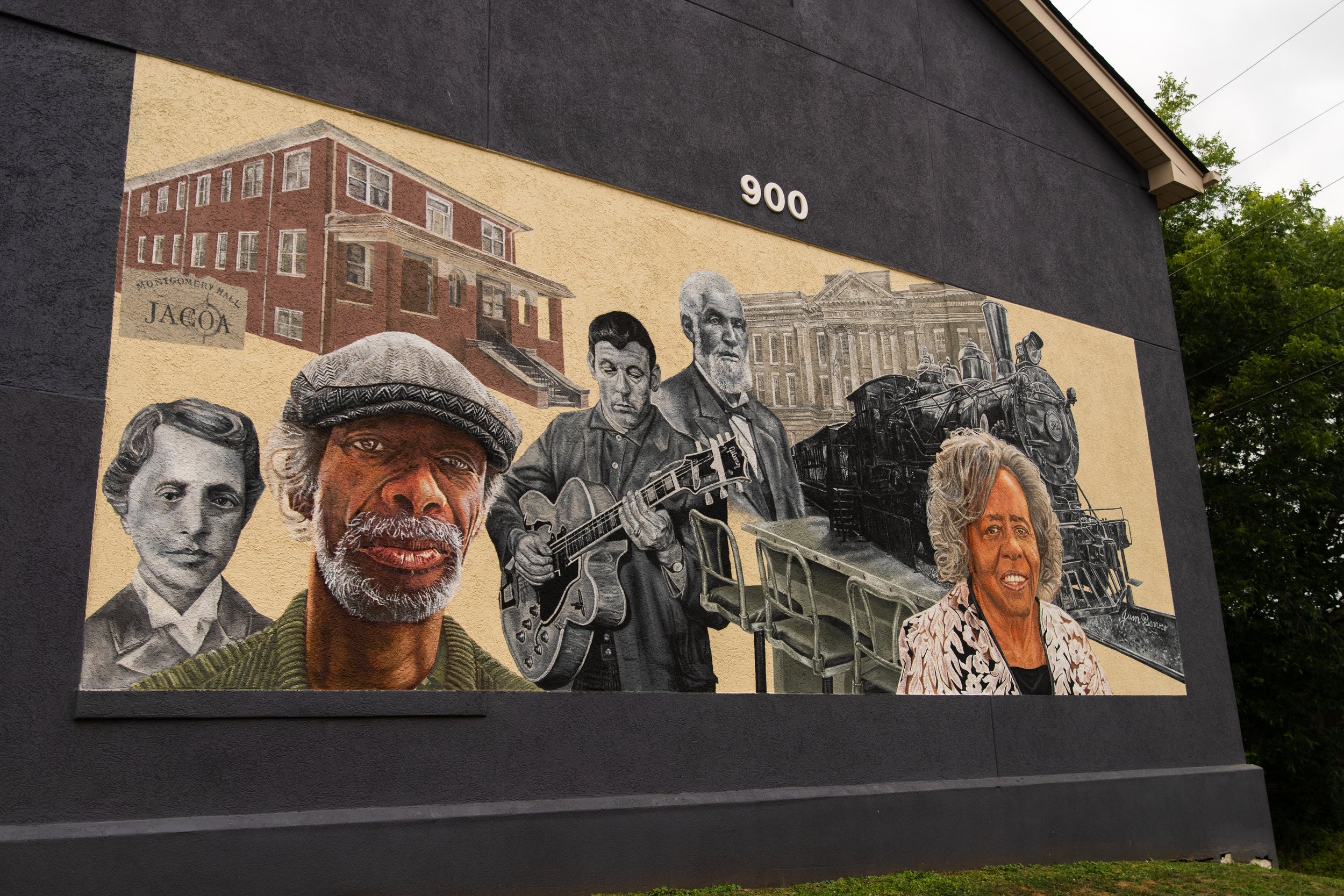Inspiring the Next Generation: Juan Barroso's Journey Creating Jackson’s Newest Mural
Written and Photographed by Maddie McMurry
“Kids would walk up and ask me how much they were paying me, and I think kids were just surprised they could make money doing art,” Juan Barroso told me as he was looking back on his experience painting Jackson’s recent mural on the JACOA building. “Some of those kids might end up being artists, and you know, that was exciting. I remember as a kid I didn't think this was an option, I didn't think I could pay bills and rent with my artwork. Man, that was one of the cooler parts.”
Juan Barroso's artistic journey began in his childhood in Mexico, where he began drawing while his mother navigated the legal residency process. His passion for art continued to blossom through college, where he honed his skills in painting and drawing, and later, in grad school in Texas, where he combined his love for pottery and painting, and began painting pottery. This art background paved the way for him to come to West Tennessee as an artist-in-residence at a gallery in Humboldt. Now, he is on another exciting venture into a personal studio in Texas.
Juan’s recent work on the mural at JACOA’s building in East Jackson was funded by the Love Your Block program and it marks a significant milestone: his first mural. Tasked with depicting historical figures important to Jackson’s history, he was given the freedom to choose subjects that would inspire local youth and honor the community's unsung heroes. In the design and sketch process, his inspiration came from Shirlene Mercer Park, where he walked around, observing plaques that commemorated local figures who contributed to the community’s growth.
The mural itself features notable figures such as Austin Raymond Merry, Montgomery Hall, Gil Scott-Heron, Carl Perkins, and Bishop Isaac Lane, alongside symbols like the Lane College chairs and Casey Jones’s train engine #382. These elements serve not only as historical markers but also as beacons of inspiration for future generations.
The process of creating the mural was as challenging as it was rewarding. Working on a hillside building, Juan had to adapt his approach—using a grid method to translate his sketches onto the wall and dedicating 36 days to complete the mural. Despite the hurdles, including the sweltering heat, the support from JACOA made the experience more manageable and enjoyable.
People would pass by and honked, waved, and expressed their enthusiasm, and local children were fascinated to learn that art could be a viable career. For Juan, seeing the community’s reaction during the ribbon-cutting ceremony was profoundly moving.
“To see in person how excited people were about this art, in that large amount, it was beautiful,” Juan said. “Public art can connect to way more people and for free. It makes art accessible to communities and way more people.”
Juan has had an art career in making pottery, painting it, and selling it online. Typically, he doesn’t get to see someone’s reaction to his artwork, and if he does, it is just one person on a small canvas Juan created with his pottery. The mural allowed him to experience firsthand the joy and connection public art can foster.
However, with every new experience comes challenges.
“I was used to about a four-inch-tall vessel, so seeing what I could do was exciting. But at first it was scary. Those first two days, I was scared,” Juan admitted. “Learning about different paints and how it blends differently. But as the days went by, it became easier and easier.”
This piece was the largest Juan has ever worked on, which was scary. He admitted that learning this new skill of creating a mural was the most challenging part. He had to learn how a new medium of paint mixed and how to use the correct paint so that the mural would hold up over time.
Even the act of speaking is something profoundly significant to Juan. Juan isn’t much of a talker, he admits the most challenging part of this mural has been the interviews and explaining his work. He does better simply being the artist, not explaining the art.
“There was a point when I was in Mexico where even the idea of being able to speak English to people was something I couldn’t have imagined. For the longest time, we just hid. I was afraid that my parents would be deported. But now that they are legal residents, I can talk about it. To imagine that I would be speaking in a more public setting, I would be in disbelief.”
Juan’s reflections on this experience go far beyond personal achievement. He views public art as a crucial element in community development, offering a sense of belonging and improving local morale. The students attending school across the street from this mural at Parkview Alternative High School get to look up every day to see this mural. They get to see figures who have impacted Jackson and West Tennessee, and they can be inspired by the history of people yet to be written in history textbooks.
Juan’s journey shows that art, in all its forms, has the potential to change lives and shape communities in profound ways.
“Overall art uplifts communities, even just seeing something beautiful can uplift your mood. It gives people a sense of belonging. People of color seeing other people of color in public art can be exciting,” Juan said. “And I think it starts adding to the development of the towns when they start adding public art. It signals an improvement in the values and the expression of them.”






